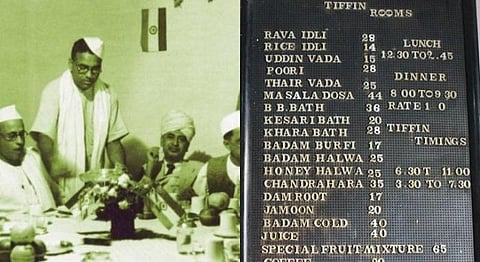
- HOMEGROWN WORLD
- #HGCREATORS
- #HGEXPLORE
- #HGVOICES
- #HGSHOP
- CAREERS
- ABOUT US
- CONTACT US

There always exist certain spots in our home cities that hold pieces of our heart, and more often than not, these are restaurants, cafes, or any food-serving establishment. Our relationship with food is so intricate that even places serving our favourite dishes earn a personal badge of adoration.
In the south of India, a name that stands out from the rest is that of the mighty MTR –– Mavalli Tiffin Room. With a long and complex history attached to the name, the place offers more than comfort food –– years of tales, decades of heritage, and above all, the familiarity of home and home food.
It all began back in the 1920s. Our protagonists are three brothers, Parameshwara Maiya, Ganappayya Maiya, and Yagnanarayana Maiya. They all ventured to Bengaluru (then Bangalore) in hopes to build a good life and left behind their quaint village in South Kanara near Udupi. All of them possessed the wondrous talent of cooking, and cooking well, and ended up finding work as cooks for a few Bengaluru residents. Within a few years, Parameshwara was lucky enough to receive support and encouragement from his employer to venture into a food business of his own. He then reached out to one of the other brothers, Ganapayya, and began the legendary Brahmin Coffee House. At the time they served just pillowy idlis and mouth-watering coffee, but they are what lent the establishment its identity. Unfortunately, later on, Paramaeshwara passed away, which is when Yagnanarayana began helping out with the business.
Some time in the 1950s, Yagnanarayana had travelled to Europe and observed the standards and procedures of food businesses there. He returned with extensive insight on hygiene and cleanliness, which is when he decided to introduce sterilisation processes of cutlery and utensils. For a while, they also used gold cutlery, later replaced by silver.
Decades passed, and the Brahmin Coffee House fame remained on the rise and barely ever reached saturation. Around 1960, the name began to pose as a deterrent as it came across as a fairly (negatively) exclusive one. When the coffee house moved to a larger space in Malvalli on Lalbagh road, Yagnanarayana changed the name to Mavalli Tiffin Room, now lovingly known as MTR.
1968 saw the passing of Yagnarayana, and MTR was handed over to Harishchandra Maiya, who continues to run the enterprise.
In 1976 when the Emergency was declared, MTR was one of the biggest restaurants loved by the public. The government called on them, among others, to reduce the cost of their food to make it accessible to the masses. Several restaurants took hits to their quality, but MTR would not stand for that. Instead, they chose to take on the serve their best food, lowered their costs, and put their daily losses on display. Soon after a few days, they were forced to shut door. Additionally, MTR approached the crisis as an opportunity –– it is when they expanded to pre-packaged foods including idli and dosa batters, rasam and sambar powders, masalas, mixes, and more. In addition to these now being a college-going student’s staple, these remain an India-wide favourite too!
MTR is a representation of family legacy as well as the food of a rich and robust part of India. Idli, dosa, sambar, rasam, and several other dishes signify so much of South Indian identity and MTR’s consistency with all these dishes has always brought about a familiar feeling. Now more than a regular spot, MTR is also a tourist must-visit, and deservedly so. They have managed to preserve not only a stream of culinary heritage, but also make it a household name across India.
When in doubt, head to MTR –– it never disappoints.
If you enjoyed reading this, we suggest you also read:
